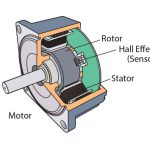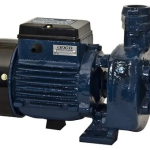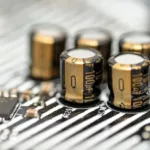
Introduction
The quest for highly reliable and efficient energy storage solutions has driven the innovation of Uninterruptible Power Supplies (UPS) that leverage the remarkable capabilities of supercapacitors. Supercapacitor-based UPS are emerging as a powerful alternative to traditional battery-powered systems, providing a range of benefits from faster charging times to longer life cycles. This article covers everything in the design of a simple and compact UPS utilizing supercapacitors, offering a sustainable alternative to traditional battery-powered systems.
Introduction to Supercapacitors and Supercapacitor-Based UPS
A supercapacitor-based UPS uses supercapacitors, also called ultracapacitors, instead of batteries to store electrical energy. Supercapacitors are high-capacitance energy storage devices designed to bridge the gap between rechargeable batteries and electrolytic capacitors. They offer high power density, rapid charging and discharging, and a long lifecycle, making them ideal candidates for UPS applications. Supercapacitor-based UPS systems provide a promising alternative to traditional battery backups, with benefits including faster response times, longer life, and environmental advantages.
Comparing Traditional and Supercapacitor-based UPS Systems
Traditional UPS primarily rely on batteries (often lead-acid) to store energy, providing power protection through conversion from stored chemical energy to electrical energy during outages. They typically offer longer backup time but with a slower discharge and recharge rate, making them well-suited for longer power interruptions. However, they are less efficient and have a shorter lifecycle compared to supercapacitors.
Supercapacitor-based UPS systems, on the other hand, store electrical energy without a chemical reaction, allowing for rapid charge and discharge cycles. This characteristic not only enables them to deliver power almost instantaneously but also contributes to a much longer lifespan and higher reliability.
Potential Advantages of Supercapacitor UPS Systems
Supercapacitor-based UPS systems offer several advantages over traditional battery-based systems, including:
- Rapid Charge/Discharge Rates: Supercapacitors can be charged and discharged much faster than batteries.
- High Power Density: They can deliver quick bursts of energy, making them suitable for applications requiring instant power backup.
- Longevity: With the ability to endure millions of charge and discharge cycles, supercapacitors significantly outlast batteries.
- Eco-Friendly: Supercapacitors are more environmentally friendly than lead-acid or lithium-ion batteries, as they do not contain heavy metals or harmful chemicals.
- Maintenance-Free: The robustness of supercapacitors translates to reduced maintenance requirements that ultimately save time and costs associated with upkeep.
- Temperature Tolerance: They operate more efficiently across elevated temperatures.
Designing UPS Using Supercapacitors: Exploring Critical Considerations
When designing a UPS using supercapacitors, several key factors must be considered to ensure efficiency, reliability, and compactness. These include:
A. Selection of Supercapacitors
- Capacity and Voltage: The supercapacitor’s capacity and voltage rating should match the load requirements of the UPS.
- Quality and Reliability: High-quality supercapacitors with proven reliability should be selected to ensure the longevity of the UPS.
B. Energy Management
- Charging Circuit: A fast and efficient charging circuit is crucial to replenish the supercapacitor’s energy quickly.
- Voltage Regulation: Since supercapacitors have a wide voltage range as they charge and discharge, a voltage regulation mechanism is necessary to provide a stable output to the load.
C. Compact Design
- Integration: The integration of components should be optimized to minimize the size of the UPS.
- Thermal Management: Efficient thermal management is vital to maintaining performance and preventing overheating in a compact design.
D. Circuit Design
The circuit design of a supercapacitor-based UPS typically includes the following components:
- Supercapacitor Array: A series-parallel configuration of supercapacitors to achieve the desired voltage and capacity.
- Charging Circuit: A circuit designed to charge the supercapacitors rapidly and safely from the AC mains or a DC source.
- DC-DC Converter: To regulate the output voltage as the supercapacitor discharges.
- Control Unit: A microcontroller or control circuit that manages the charging process and seamlessly switches between mains and UPS power.
E. Implementation and Testing
Implementation involves assembling the components based on the circuit design, followed by rigorous testing to ensure it meets its design specifications. Key tests include:
- Charge/Discharge Cycles: To evaluate the charging speed and energy delivery efficiency.
- Load Capacity: To determine the maximum load the UPS can support.
- Durability Testing: To assess the longevity and reliability under various conditions.
Supercapacitor-Based UPS in Action: Applications and Future Prospects
Supercapacitor-based UPS systems find applications in areas requiring rapid response times and high cycle efficiencies, such as data centres, medical facilities, consumer electronics, emergency lighting, public transportation, renewable energy systems, military applications, and industrial environments. As technology advances, we can expect supercapacitors to become more compact, efficient, and cost-effective, further expanding their applications in energy storage solutions.
Bottom Lines
Designing a simple and compact UPS utilizing supercapacitors presents a viable alternative to traditional battery-based systems, offering advantages in speed, efficiency, and longevity. By following the step-by-step instructions and considerations outlined in this article, you can develop an efficient and reliable UPS system tailored to your application’s specific needs. While there are challenges to overcome, particularly in energy density and cost, the benefits of supercapacitor technology hold great promise for the future of uninterruptible power supplies.





















